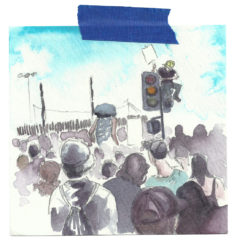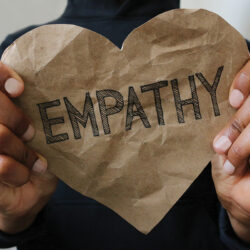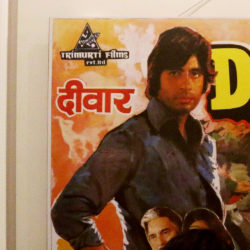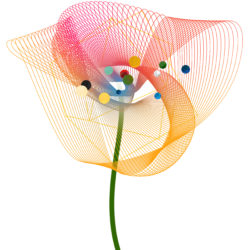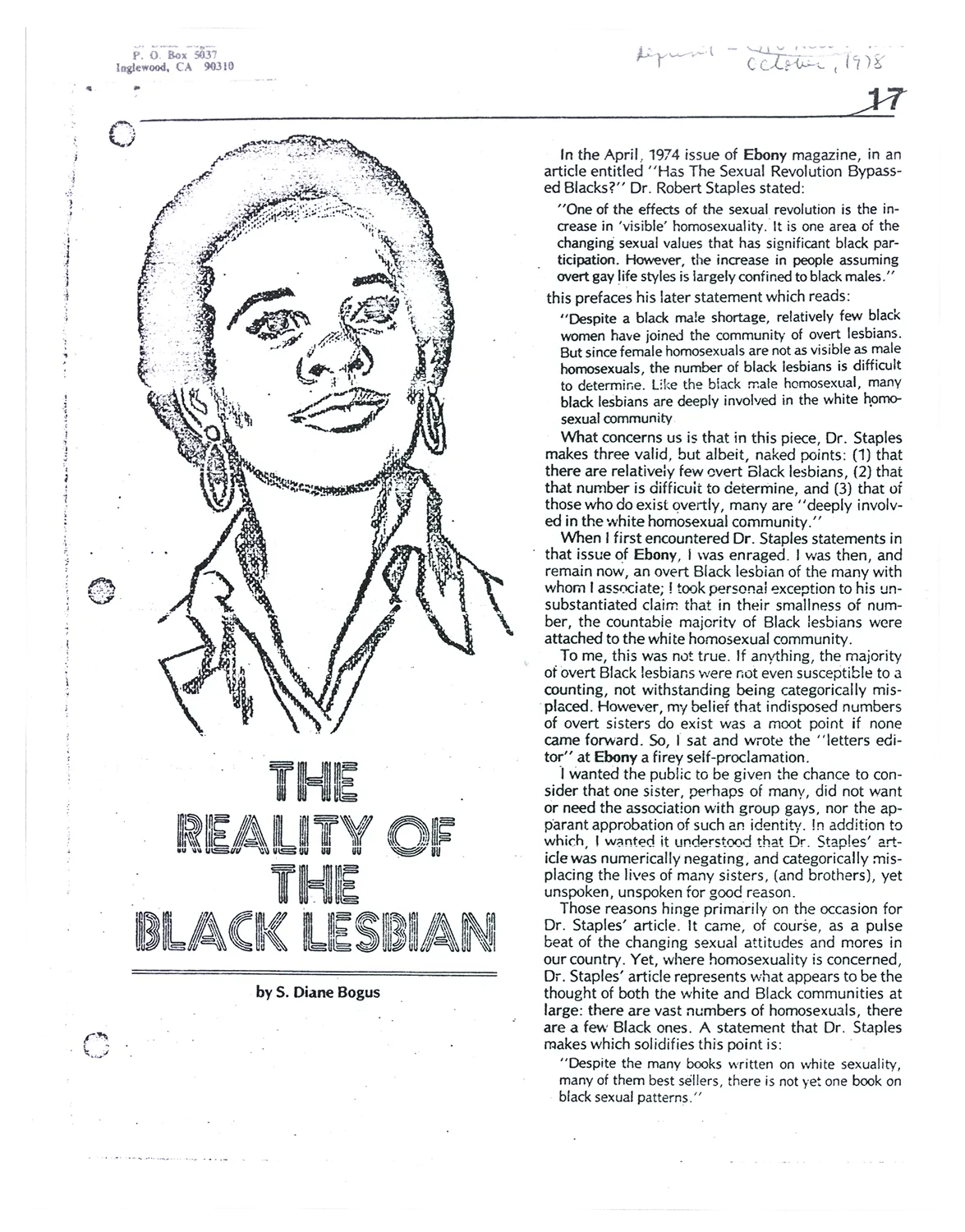
In the essay “The Reality of the Black Lesbian,” author and publisher SDiane Bogus touches on “intersectionality,” a term coined by Kimberlé Crenshaw and rooted in Black feminism: “Because I have come to prefer not to spend all my time defining or explaining my right to be Black, gay or whatever, I could not ever be wholly enmeshed in a single group ideology.” Intersectionality affirms that people have multiple identities that cannot be divided into single issues. Black feminist Audre Lorde speaks to this when she writes, “There is no such thing as a single-issue struggle because we do not live single-issue lives.”
The Reality of the Black Lesbian by S. Diane Bogus
In the April, 1974 issue of Ebony magazine, in an article entitled “Has The Sexual Revolution Bypassed Blacks?” Dr. Robert Staples stated:
“One of the effects of the sexual revolution is the increase in ‘visible’ homosexuality. It is one area of the changing sexual values that has significant black participation. However, the increase in people assuming overt gay life styles is largely confined to black males.”
this prefaces his later statement which reads:
“Despite a black male shortage, relatively few black women have joined the community of overt lesbians. But since female homosexuals are not as visible as male homosexuals, the number of black lesbians is difficult to determine. Like the black male homosexual, many black lesbians are deeply involved in the white homosexual community.
What concerns us is that in this piece, Dr. Staples makes three valid, but albeit, naked points: (1) that there are relatively few overt Black lesbians, (2) that that number is difficult to determine, and (3) that of those who do exist overtly, many are “deeply involved in the white homosexual community.”
When I first encountered Dr. Staples statements in that issue of Ebony, I was enraged. I was then, and remain now, an overt Black lesbian of the many with whom I associate; I took personal exception to his unsubstantiated claim that in their smallness of number, the countable majority of Black lesbians were attached to the white homosexual community.
To me, this was not true. If anything, the majority of overt Black lesbians were not even susceptible to a counting, not withstanding being categorically misplaced. However, my belief that indisposed numbers of overt sisters do exist was a moot point if none came forward. So, I sat and wrote the “letters editor” at Ebony a firey self-proclamation.
I wanted the public to be given the chance to consider that one sister, perhaps of many, did not want or need the association with group gays, nor the apparent approbation of such an identity. In addition to which, I wanted it understood that Dr. Staples’ article was numerically negating, and categorically misplacing the lives of many sisters, (and brothers), yet unspoken, unspoken for good reason.
Those reasons hinge primarily on the occasion for Dr. Staples’ article. It came, of course, as a pulse beat of the changing sexual attitudes and mores in our country. Yet, where homosexuality is concerned, Dr. Staples’ article represents what appears to be the thought of both the white and Black communities at large: there are vast numbers of homosexuals, there are a few Black ones. A statement that Dr. Staples makes which solidifies this point is:
“Despite the many books written on white sexuality, many of them best sellers, there is not yet one book on black sexual patterns.” (continued on next page)
Read the entire article through Gale Primary Sources (CalNet ID required).
“The Reality of the Black Lesbian,” by SDiane Bogus, GPU News, 1978, Carton 5:46, SDiane Bogus papers, BANC MSS 2018/280, The Bancroft Library, University of California, Berkeley.

